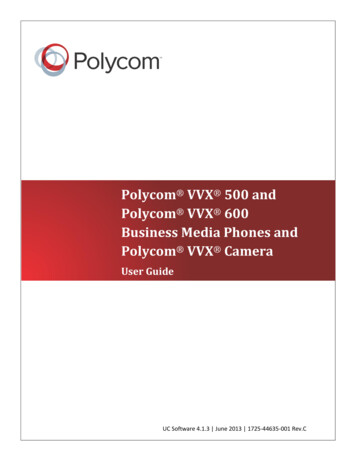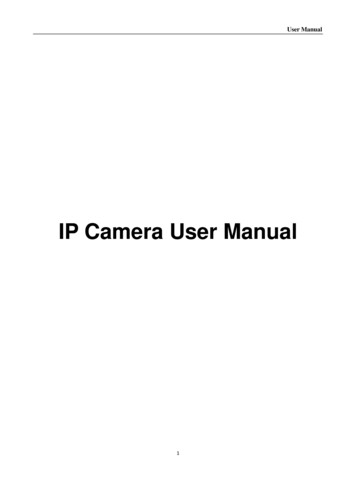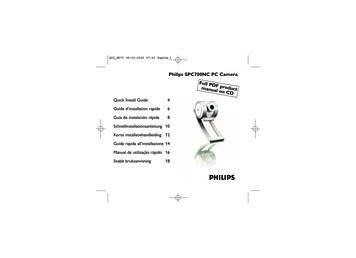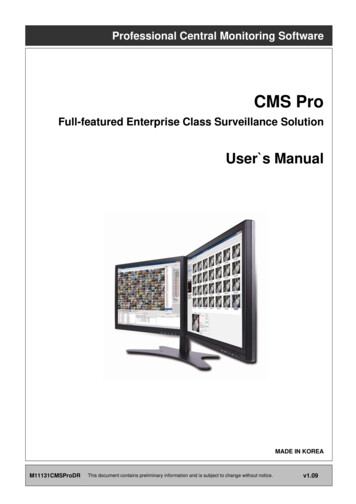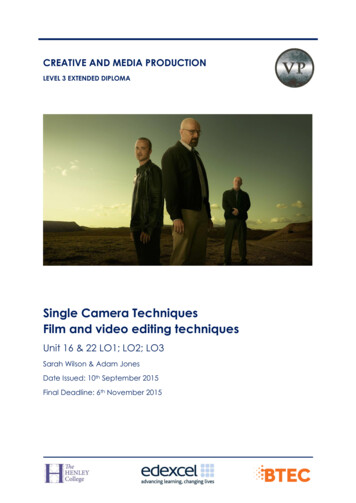
Transcription
CREATIVE AND MEDIA PRODUCTIONLEVEL 3 EXTENDED DIPLOMASingle Camera TechniquesFilm and video editing techniquesUnit 16 & 22 LO1; LO2; LO3Sarah Wilson & Adam JonesDate Issued: 10th September 2015Final Deadline: 6th November 2015
Aim and purposeIn this unit learners will explore the characteristics of single camera production, and developthe creative, organisational and technical skills required to devise, plan and implement theirown productions.Unit introductionWith the introduction of more television channels, some specifically dedicated to drama, thesingle camera drama production has become very popular with broadcasters andaudiences. This means that there should be more opportunities for people with skills in singlecamera techniques to gain employment in this sector. This might be in terms of technical skillsin production or creative skills in developing ideas into production. This unit aims to givelearners an opportunity to use production skills, already gained from previous units, anddevelop them further to create a production using single camera techniques. The unit giveslearners the opportunity to explore existing single camera productions. This will help them tothink about, plan and produce their own productions. As part of this exploration learners willinvestigate the use of camera scripts and storyboards as tools of storytelling. Learners willdevelop the organisational skills required for the planning and implementation of a singlecamera drama production. They will identify key production roles and take on one or moreof these roles during their own production. Set design, cinematography, lighting, use of soundand editing techniques will all be part of the skills learners develop through following this unit.Health and safety issues will also be addressed in both location and studio shoots, withlearners producing risk assessments prior to any production work.Guidance:Create Tabs on websiteUnit 16 and unit 22U16 LO1U22 LO1U16&22 LO2&LO3Referencing:Please make sure all research is referenced – any work being plagiarised will failhttp://www.wikihow.com/Cite-a-Website - Guidance can be found here
U22 LO1: Features of single camera productionDeadline: 6h lesson of week commencing 21st September 2015LO Aim: To comprehensively explain the features of single camera production withreference to elucidated examples and consistently using subject terminologycorrectlyTask Description:The British Film Institute has commissioned Vibe Productions toproduce two one minute productions that they can use atthe BFI to demonstrate to the public the importance of miseen-scene and setting the scene within TV and film.This assignment requires you to engage in a variety of theoryand practical tasks. You are required to research elements ofsingle camera techniques as well as produce two one minuteproductions based on the conventions you have learned.You will work in groups to produce one Period Production and oneCrime Production. You will need to focus on camera angles, mise-enscene (costume / props / location) and narrative.Whilst you experiment with different production processes you must record andcritically assess the effectiveness of using a single camera. These notes should bewritten on up on your websites next to your final productions.
Task 1: Formatsa)On you own research what a TV format isb)Write a definition of a TV serial; TV series andsingle camera production and provide examples ofeach.You should upload a YouTube excerpt and writebeside each clip exactly what it is that makes iteither a serial, series or single camera production.You should provide at least one example for eachTask 2: Genrea)b)c)d)What is genre?What are conventions?List a variety of different TV genres?Pick 2 of these genres to analyse in more detail. What are the conventions ofthese genres? Provide examples of TV shows that demonstrate theseconventions.Task 3: Narrativea) What is narrative? Different narrative structures.b) Below is a list of narrative structures – write a definition for each one, detail thepros and cons of using these in TV shows and provide at least one examplefor each discussing why it was used and if it was effective.Linear; non-linear; realist; anti-realist; flashback; open ended; closed endedNB: Reference all websites
Task 4You are required to produce 2 short TV shows, no longer than one minute in length,(sequences) to demonstrate an understanding of single camera techniques. You willwork in groups of 4 and will follow certain production roles. No pre-production isrequired for either of these shows.Production roles: Camera person / Director / Costume designer / Sound engineerYou must swap roles for each show so you have carried out at least 2 of the aboveroles.You will all edit your own version of the production and upload to your website. Nextto each production you will write a short evaluation on the process of using a singleCameraShow 1Your first show MUST follow this structure:Format: Single Drama Genre: Period Linear Narrative Realist Closed EndedShow 2Your second show MUST follow this structure:Format: Single Drama Genre: Crime Non-linear narrative anti-realist open ended
U16 LO1: The development and principles of editingDeadline: 5th lesson of week commencing 5th October 2015LO Aim: critically assess the development and principles of editing with supportingarguments and elucidated examples, and consistently using subject terminologycorrectlyTask Description:The British Film Institute is putting on an exhibition on TheDevelopment and Principles of Editing at the beginning ofOctober. They have asked Vibe productions to provide themwith a variety of information to give to the public in the formof a visual display.This assignment requires you to engage in a selection oftheory and practical tasks. You are required to individuallyresearch the development and principles of editing and thenin groups of 3 produce a wall display focusing on two chosencase studies, which will go up at the BFI exhibition.You will watch excerpts from a variety of films dating back to thebeginning of the 20th century along with the feature length film The Godfather. Youwill use these case studies in your display
Class Activity 1: DevelopmentClass discussions and focus groups looking at: in-camera editing;following the action; multiple points of view; shot variation; manipulation of diegetictime and space; film, video; analogue; digitalTask 1:Individually research the difference between digital and analogue focusing on theadvantages and disadvantages.Write your finding up in your blog along with illustrations.NB: Reference all websitesTask 2: PurposesStorytellingHow can narrative:a) engage the viewerb) create paceDiscuss the above using examples to back up your theory.Class activity 2: Conventions and techniquesDefine and provide examples of the following:Seamless editing; continuity; editing rhythmTask 3: Conventions and techniquesIn pairs you are required to film the following techniques, upload them to youraccount and then define what they are and the meaning they create to theaudiencemontage; jump-cutting; parallel editing; 180 degree rule; transitions; POV; shotreverse-shot;Task 4: TechniquesIn pairs film a running scene and then cut it to two different soundtracks. Slow down,speed up and cut to the beat to match the music. Then upload to your websites
Class activity 3: DevelopmentIn class we will watch a variety of films dating from the beginning of the 20th Centuryup until now. You are required to makes notes on the sequences (these notes gotowards your final marks). We will focus on shot variation, cutting and effects andhow these have developed over time.Task 5: The GodfatherWatch The Godfather over 2 lessons. You are required tomake comprehensive notes which will be marked. TheDVD will be stopped to highlight keys points relating toyour assignment.Analyse the filming and editing techniques of TheGodfather. You MUST refer to what you havelearnt in previous tasks and use technicallanguage as much as possible.Comprehensive notes are to be taken during thescreening of the film – these will be submitted andmarked as part of the assignment.You will then be required to work in groups of 3 – 4to create a display piece covering numerousexamples of how The Godfather uses film and editingtechniques. You will need to print screen sections fromthe internet in order to illustrate your points
U16 and U22 LO2 and LO3: Plan a single cameraproductionLO2 & LO3 Deadline: Friday 6th November 2015LO Aim: Generate thoroughly thought through ideas for a single camera productionshowing creativity and flair and working independently toprofessional expectationsTask Description:The British Film Institute is holding a film festival during theOctober half term for young film makers aged between 16 and20.The top 3 productions from each category will be shown at thefestival and a winner will be chosen by VIP guests.The Categories are:a) Period Dramab) Crime DramaEntrants must individually plan and develop an idea focusing on Single Cameratechniques, Mise-en-scene, location shooting, sound and editing.The drama must be 5 minutes long and include one of the following elements:a) Flashbackb) Split Screen / parallel editingPlanning and post production will also be taken into account during the finalassessment
Task 1a) Create a mind map and mood board for your 5 minute drama.b) Write a treatment for your production. Treatment can be found on the preproduction tabTask 2a) Define the narrative structure of your production.b)Write the script for your drama – Scrip must contain stagedirectionTask 3Storyboard your production – to be photographs NOThand drawnTask 4Location Recces including photos – multiple to be completedfor ‘possible’ locationsTask 5Props list and sound table, Lighting and equipment list 9all forms can be found onvibe)Task 6Produce a Production ScheduleTask 7Call Sheet and Risk Assessment
Task 8: Film 5 minute dramaYour drama must use 1 camera only, have multiple shots from multiple angles. Yourmise en scene, costume and make-up must match your genre and your film mustcontain a flashback or parallel editingTask 9: Manage your footageSave raw footage onto a MEMORY STICK (do not edit from the SD card)Make sure folder on memory stick are named correctly (print screen for portfolio)Import you footage onto Premier Pro: You must name the project correctly, namefolders correctly (print screen for portfolio)Create an edit decision list – look over your footage and decide what you are goingto use (edit decision list to be found on vibe)Task 10: Edit 5 minute dramaMake sure sound level are correct before export and that you have end creditsExport, upload to YouTube and upload to you website
ResourcesBaylis P, Freedman A, Procter N et al – BTEC Level 3 National Creative Media Production, Student BookBaylis P, Freedman A, Procter N et al – BTEC Level 3 National Creative Media Production, Teaching ResourceEvans R – Practical DV Film Making, 2nd EditionFiggis M – Digital Film MakingGloman C— No-budget Video Production: Producing Professional Quality Commercials, How-to’s, Trainingand Features – for Virtually NothingHardy P – Filming on a Microbudget, 3rd EditionJones C and Joliffe G – The Guerilla Film Makers Handbook, 3rd EditionKindem G and Musburger R – Introduction to Media Production: From Analog to Digital, 4thLogan J and Schellhardt L – Screenwriting for Dummies, 2nd Edition (J Wiley, 2008)Millerson G – Video Production Handbook, 4th Edition (Focal Press, 2008Musberger R – Single Video Camera Production, 4th Edition (Focal Press, 2005Roberts-Breslin J – Making Media: Foundations of Sound and Image Production, 2nd Edition (Focal Press, 2007)Thurlow C – Making Short Films: The Complete Guide from Script to Screen, 2nd Edition (Berg, 2008)www.bbc.co.uk/dna/filmnetwork/Filmmakingguide – BBC information about film makingwww.britishfilmmagazine.com/filmmaking.html – website of The British Film Magazinewww.firstlightmovies.com – First Light exists to encourage film making amongst young people and has links toSkillset and the UK Film ion.html – information about film production techniquesGrading CriteriaUnit 22: Single Camera TechniquesUnit 16: Film and Video Editing Techniques
Logan J and Schellhardt L - Screenwriting for Dummies, 2nd Edition (J Wiley, 2008) Millerson G - Video Production Handbook, 4th Edition (Focal Press, 2008 Musberger R - Single Video Camera Production, 4th Edition (Focal Press, 2005 Roberts-Breslin J - Making Media: Foundations of Sound and Image Production, 2nd Edition (Focal Press, 2007)
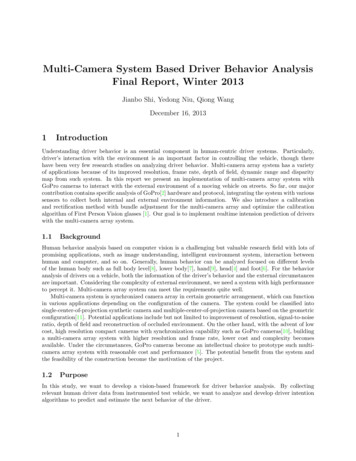
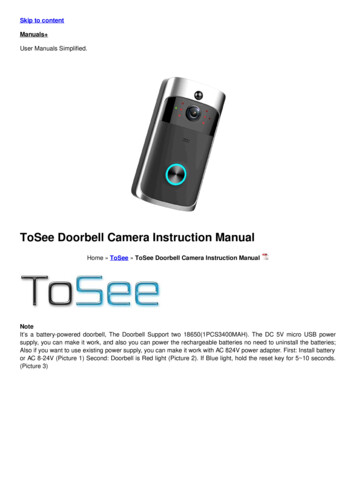
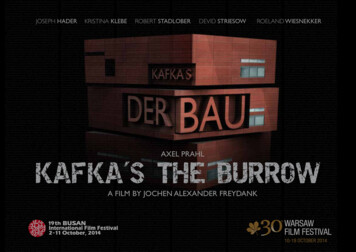
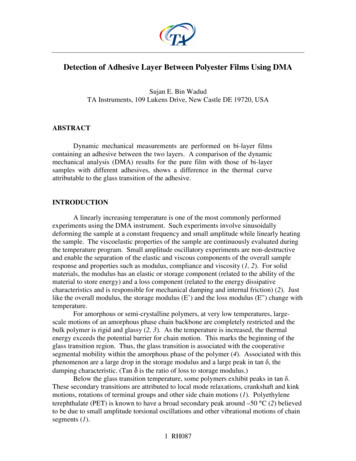
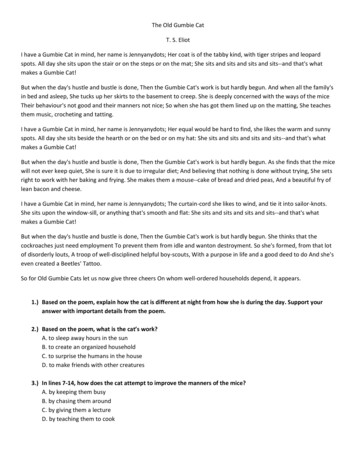
![[digital] Visual Effects and Compositing](/img/1/9780321984388.jpg)
